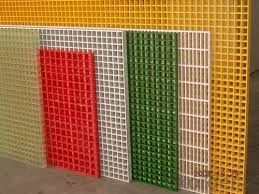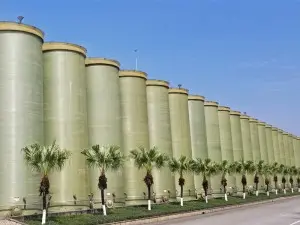
-
 Afrikaans
Afrikaans -
 Albanian
Albanian -
 Amharic
Amharic -
 Arabic
Arabic -
 Armenian
Armenian -
 Azerbaijani
Azerbaijani -
 Basque
Basque -
 Belarusian
Belarusian -
 Bengali
Bengali -
 Bosnian
Bosnian -
 Bulgarian
Bulgarian -
 Catalan
Catalan -
 Cebuano
Cebuano -
 China
China -
 China (Taiwan)
China (Taiwan) -
 Corsican
Corsican -
 Croatian
Croatian -
 Czech
Czech -
 Danish
Danish -
 Dutch
Dutch -
 English
English -
 Esperanto
Esperanto -
 Estonian
Estonian -
 Finnish
Finnish -
 French
French -
 Frisian
Frisian -
 Galician
Galician -
 Georgian
Georgian -
 German
German -
 Greek
Greek -
 Gujarati
Gujarati -
 Haitian Creole
Haitian Creole -
 hausa
hausa -
 hawaiian
hawaiian -
 Hebrew
Hebrew -
 Hindi
Hindi -
 Miao
Miao -
 Hungarian
Hungarian -
 Icelandic
Icelandic -
 igbo
igbo -
 Indonesian
Indonesian -
 irish
irish -
 Italian
Italian -
 Japanese
Japanese -
 Javanese
Javanese -
 Kannada
Kannada -
 kazakh
kazakh -
 Khmer
Khmer -
 Rwandese
Rwandese -
 Korean
Korean -
 Kurdish
Kurdish -
 Kyrgyz
Kyrgyz -
 Lao
Lao -
 Latin
Latin -
 Latvian
Latvian -
 Lithuanian
Lithuanian -
 Luxembourgish
Luxembourgish -
 Macedonian
Macedonian -
 Malgashi
Malgashi -
 Malay
Malay -
 Malayalam
Malayalam -
 Maltese
Maltese -
 Maori
Maori -
 Marathi
Marathi -
 Mongolian
Mongolian -
 Myanmar
Myanmar -
 Nepali
Nepali -
 Norwegian
Norwegian -
 Norwegian
Norwegian -
 Occitan
Occitan -
 Pashto
Pashto -
 Persian
Persian -
 Polish
Polish -
 Portuguese
Portuguese -
 Punjabi
Punjabi -
 Romanian
Romanian -
 Russian
Russian -
 Samoan
Samoan -
 Scottish Gaelic
Scottish Gaelic -
 Serbian
Serbian -
 Sesotho
Sesotho -
 Shona
Shona -
 Sindhi
Sindhi -
 Sinhala
Sinhala -
 Slovak
Slovak -
 Slovenian
Slovenian -
 Somali
Somali -
 Spanish
Spanish -
 Sundanese
Sundanese -
 Swahili
Swahili -
 Swedish
Swedish -
 Tagalog
Tagalog -
 Tajik
Tajik -
 Tamil
Tamil -
 Tatar
Tatar -
 Telugu
Telugu -
 Thai
Thai -
 Turkish
Turkish -
 Turkmen
Turkmen -
 Ukrainian
Ukrainian -
 Urdu
Urdu -
 Uighur
Uighur -
 Uzbek
Uzbek -
 Vietnamese
Vietnamese -
 Welsh
Welsh -
 Bantu
Bantu -
 Yiddish
Yiddish -
 Yoruba
Yoruba -
 Zulu
Zulu
frp cover
FRP covers, short for Fiber Reinforced Polymer covers, have revolutionized various industries with their blend of durability, lightness, and resistance. These composite materials, constructed from a polymer matrix reinforced with fibers, have become indispensable due to their unique properties.

One of the most significant advantages of FRP covers is their unparalleled durability combined with lightweight nature. Unlike traditional materials such as metal or concrete, FRP is remarkably resistant to corrosion, which makes it ideal for harsh environments. Industries dealing with chemicals or exposed to extreme weather can greatly benefit from the robustness of FRP. For instance, wastewater treatment plants have started employing FRP covers to shield their facilities, leading to reduced maintenance costs and extended lifespan of the infrastructure.
The safety and non-conductive properties of FRP covers further enhance their utility. In sectors like aerospace and railways, where electrical safety is paramount, FRP offers a non-conductive solution that prevents accidental electric shocks. Moreover, the high strength-to-weight ratio of FRP not only contributes to safety but also improves efficiency. This property proves crucial in transport industries where weight reduction directly translates to fuel efficiency and cost savings.

From an environmental perspective, FRP stands out as a sustainable material option. The production process of FRP consumes less energy compared to traditional materials, and the end products often have a longer operational life, reducing the frequency of replacements and the associated environmental impact. This aligns with the growing global focus on sustainability and reducing carbon footprints.
In construction, FRP covers are gaining acceptance for their adaptability and ease of installation. Their lightweight nature reduces labor costs, and the ease with which they can be customized allows for versatile applications ranging from pedestrian walkways to industrial site enclosures. Architects and engineers appreciate FRP for these reasons, particularly when dealing with complex structures where traditional materials would increase both time and budget.
frp cover
Furthermore, the manufacturing process of FRP can be tailored to meet specific needs. This customization includes altering the matrix or changing the type of fiber reinforcement to achieve the desired strength, flexibility, or thermal properties. Industries now have the flexibility to design FRP covers that perfectly align with their operational requirements.
The longevity of FRP covers also contributes to their economic advantages. While the initial investment in FRP might be higher than in traditional materials, the reduced maintenance and replacement costs offer significant savings over time. Companies have reported a significant reduction in lifecycle costs, confirming FRP as a cost-effective solution in long-term operational strategies.
Expert testimonies from industry leaders further attest to the credibility and reliability of FRP covers. Numerous case studies document the successful implementation of FRP covers in challenging scenarios, reinforcing their status as a trusted solution across varied industries. Their resistance to UV rays, fire, and extreme temperature variations has added layers of trust, ensuring that industries can deploy FRP covers without compromising on performance.
In conclusion, FRP covers represent a blend of strength, safety, and sustainability, making them an optimal choice for industries seeking durable and adaptable material solutions. As technology advances, we can expect even further enhancements in the properties and applications of FRP, solidifying its position as a material of the future.
Latest news
-
Exploring the Benefits of Top Hammer Drifter Rods for Enhanced Drilling PerformanceNewsJun.10,2025
-
High-Precision Fiberglass Winding Machine for GRP/FRP Pipe Production – Reliable & Efficient SolutionsNewsJun.10,2025
-
FRP Pipes & Fittings for Shipbuilding - Corrosion-Resistant & LightweightNewsJun.09,2025
-
Premium FRP Flooring Solutions Durable & Slip-ResistantNewsJun.09,2025
-
Premium Fiberglass Rectangular Tanks Durable & Lightweight SolutionNewsJun.09,2025
-
Tapered Drill String Design Guide Durable Performance & UsesNewsJun.09,2025









